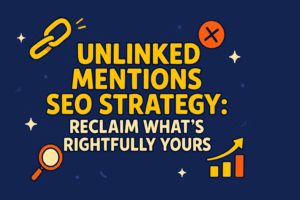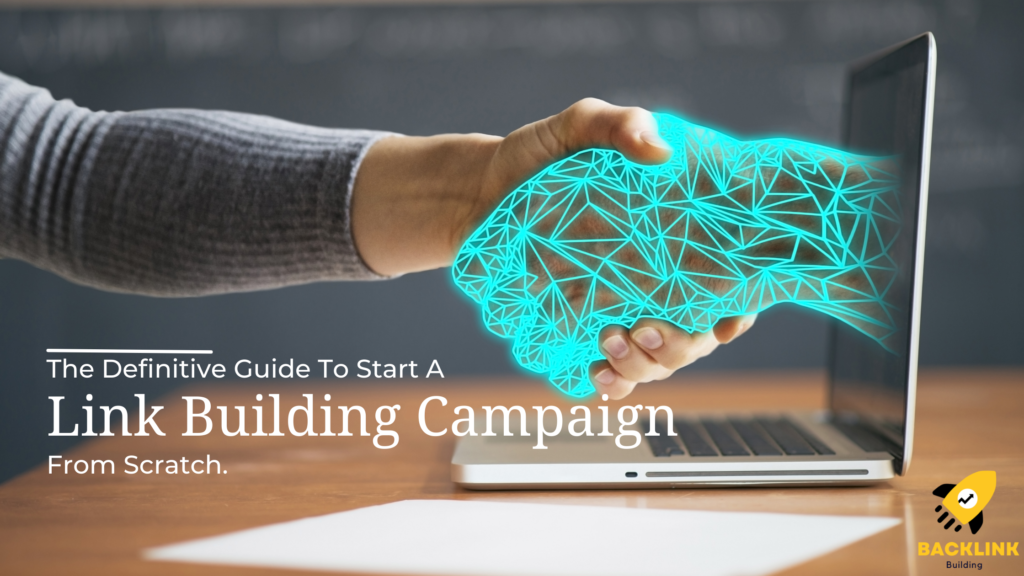
In SEO, we tackle many things, such as on-page seo, technical SEO, off-page SEO, and link building. Website owners or SEO professionals often face a common problem: starting link building campaigns from scratch. It’s not as easy a task as it may seem to be. In this blog post, we will discuss everything related to link building so that you know exactly what to do the next time you have to start a link building campaign!
So, let’s get started!
Link building is one of the most important aspects of SEO. It helps you improve your website’s ranking and increase your website’s visibility to search engines and potential customers. It would be best to start with a solid foundation to get the most out of link building. This Definitive Guide will teach you everything you need to know about starting a link building campaign from scratch. We’ll cover a link building campaign, finding high-quality links, and getting started with email outreach. We’ll also give you tips on avoiding black hat link building techniques. Let’s get started!
What Is A Link Building Campaign?

A link building campaign is a planned and organized effort to increase the number of backlinks to a website. To run an effective link building campaign, you need to understand link building basics.
This includes understanding what a backlink is, how search engines use it to rank websites, and how to find high-quality links. Once you have a solid understanding of link building, you can start planning your link building campaign.
What Is A Backlink?
Search engines use backlinks to rank websites. In simple words, a backlink is a link that points from one website to another. A backlink is called an “inbound link” or an “incoming link.”
However, not all backlinks are created equal. Some backlinks are more valuable than others. For
How Do Search Engines Use Backlinks?
Search engines use backlinks to rank websites. They look at the number and quality of a website’s backlinks. The more high-quality backlinks a website has, the higher it will rank in search engine results pages (SERPs).
When planning your link building campaign ideas, there are a few things you need to keep in mind.
- Focus on quality over quantity. It’s better to have a few high-quality backlinks than some low-quality ones.
- Links are relevant to your website. Try to get links from a variety of sources, such as guest posts,
- Don’t just get links from directories, blog comments, infographics, and press releases. Linking to unrelated websites will not help your website’s ransom directories or blog comments.
Crawling and Indexing
Search engine bots continuously crawl the web, discovering new pages and following links from one page to another. Backlinks act as pathways for search engine crawlers to discover new pages they might not otherwise find.
How To Find High-Quality Links?
Before we get into the step-by-step link building strategies, we must know what makes a good (or bad) link.
This way, you can focus on building links that will Improve your Google rankings.
So, here’s a way to identify links that are worth building:
- No-follow Vs. Do-follow

Nofollow links are links that do not pass link juice. In other words, they don’t help your website’s ranking. Dofollow links are links that do pass link juice. These are the types of links you should focus on.
Note: The rel= “rel nofollow” tag tells the Google search engine that the “website owner does not want Google to count this link as an endorsement.”
- Website Authority
Authority matters the most. Domain authority (DA) is a metric that measures the quality of a website: the higher the DA, the more trustworthy it is. We found that no factor except domain authority matters the most during the testing period. y and link-worthy the website is.
Checking the DA of potential link sources is an excellent way to determine whether or not they’re worth your time.
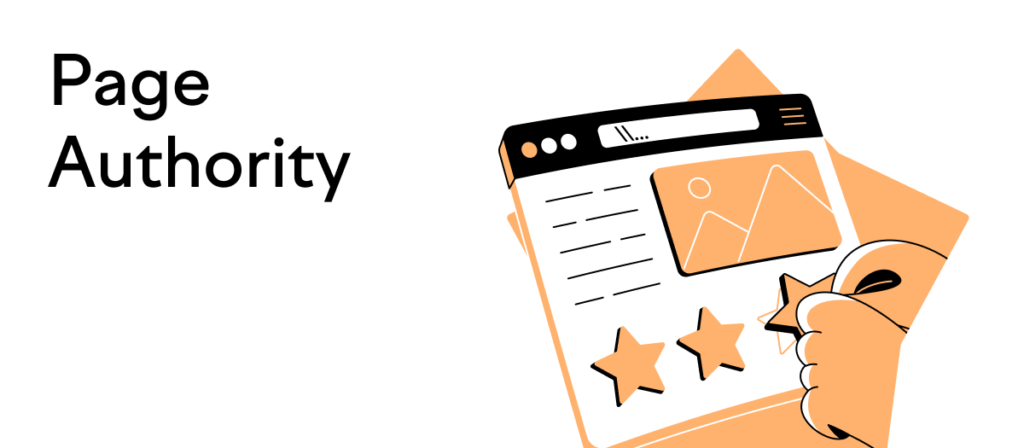
In addition to website authority, you should check the page authority (PA) of the page you want to link to.
The PA is a metric that measures the quality of a web page. Like with DA, the higher the PA, the more link-worthy the page is. To check the PA of a potential link source, you can use a tool like MozBar.
- Site Relevancy
When link building, it’s essential to ensure that the websites you link to are relevant to your website.
For example, if you have a website about dog training, you wouldn’t want to link to a website about cat food. That would be irrelevant. Relevant links are more valuable than non-relevant ones because they’re more likely to be clicked on by people interested in what you say.
- Position Of Link
The position of a link is also essential. A link at the top of a page is more right-click on links above the fold. When link building, try to get links as close to People who are likelier to see and click on links above the fold. At the top of the page, as possible.
- Editorially Placement
An editorial link is a link placed by the website owner. They’re not paid for and are not part of an exchange. Editorial links are the most valuable because they show that the website owner thinks your website is worth linking to. When link building, try to get editorial links.
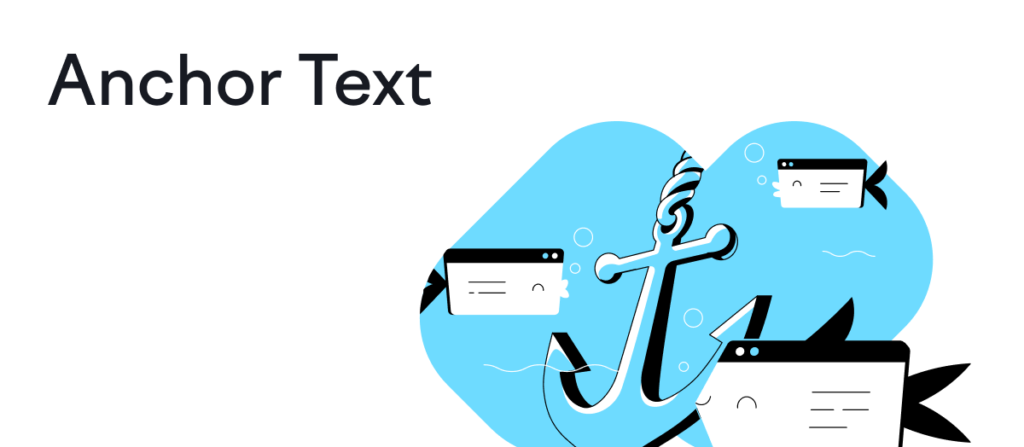
The anchor text is the text that’s used to link to your website. For example, if I wanted to link to Moz’s blog, I could use the anchor text “Moz blog.”
You should try to get links with anchor text containing your target keyword when link building. For example, if you’re trying to rank for the keyword “dog training,” you would want to get links with the anchor text “dog training.”
We have discussed all the aspects of link building; now, let’s move on to the link building campaign itself.
Benefits Of Link Building Campaign
- It can help your website’s ranking
- It helps improve your website’s authority
- Generates more traffic to your website
- Help you build relationships with other website owners.
- It can help you get more links to your website
- Improves your website’s trustworthiness
- Link building can help increase the number of inbound links to your website..
- It is an excellent way to promote your website
How To Start A Link Building Campaign?
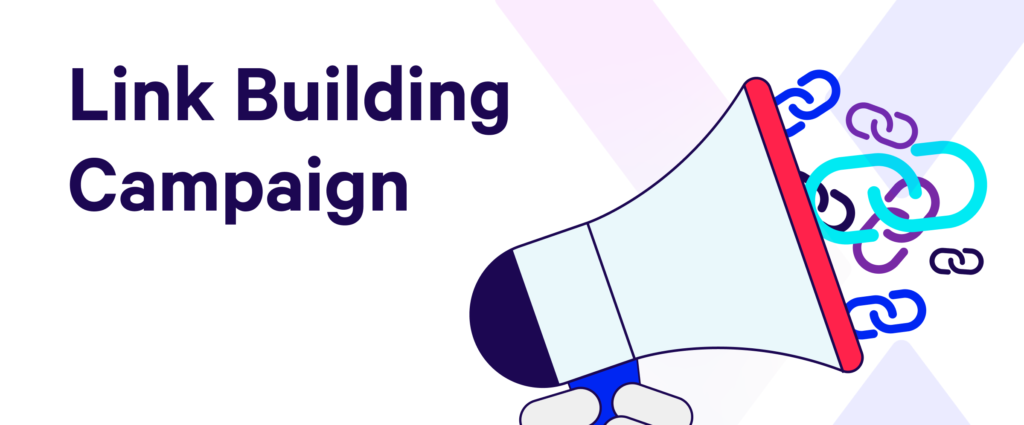
This section will discuss the successful link building campaign in three simple steps. By the end of this blog post, you will know how to start link-building campaigns from scratch.
Three simple steps are:
- Finding prospects
- Finding their contact information
- Email Outreach
Now let’s discuss these steps one by one:
Finding Prospects

The first step is to find link prospects. These are websites from which you want to get links. There are several ways to find link prospects: Google, social media, or link directories.
To find link prospects with Google, enter your target keyword into the search bar and add “resources.” For example, if you’re in the dog-training niche, search for “dog training resources.” This will give you a list of websites providing dog training information.
You can also find link prospects by looking at who’s linking to your competitors. To do this, enter your competitor’s URL into a tool like Ahrefs and click “Backlinks.” This will show you all the websites that link to your competitor.
Now that you have the list of websites, it would be best to filter competitors. It would help if you filtered the domains per your requirements so that your prospects’ finding step is up to par.
Once you have filtered the domains, you need. You can then reach out to these websites and ask them to link to your website.
Finding Their Contact Information
The next step is to find the contact information of the people who run these websites. To do this, you can use a tool like Hunter.io. Enter the website’s URL into Hunter and click “Find email addresses.” This will give you a list of email addresses associated with that website.
Another way to find emails is through manual work. You can see the contact information by looking at the website’s “Contact” page, doing a Google search for “[website] + contact,” or looking at the company’s LinkedIn Page.
Email Outreach
All the hard work is done. The final step is to email these people and ask them to link to your website. The best way to do this is to contact them directly.
To do email outreach, email the person you want to link from and ask if they’re interested in linking to your website. Include a link to your website so they can see what you’re all about.
Do not forget to follow up after sending the first mail and receiving any reply from the target domains.
Note: The Above Process Applies To Other Link-Building Tactics also:
- Guest posting
- Blogger outreach
- Resource link building
- Link reclamation
- Paid link building
- Infographic link building
Example 1: Let’s consider Guest posting:
The process of guest posting is similar to the process of the link-building campaign. The only difference is that you’re writing an article for another website instead of asking them to link to you in guest posting.
For guest posting, find a website that accepts guest articles (Step 1: finding prospects) and pitch them an article idea (Steps 2 & 3: Finding contact info and email outreach). If they’re interested, write the article and include a link to your site in the article content or the author bio.
Example 2: Let’s consider Blogger outreach:
Blogger outreach is similar to link building, but the goal is to get bloggers to mention your brand or product on their blog instead of linking to you.
For blogger outreach, find relevant blogs in your industry (Step 1: finding prospects) and pitch them a story idea or product review (Steps 2 &3: Finding contact information and email outreach). If they’re interested, they’ll write about you on their blog.
These are just two examples of starting link-building campaigns from scratch. Following these steps, you can get high-quality links from websites you want in your industry.
Do not forget that link building is a time-consuming process. It requires patience and perseverance to see results. But it’s worth it! The links you build will help your website rank higher in search engines and get more traffic.
Black Hat Link Building
A Link-building campaign would be incomplete without the knowledge of black hat SEO.
Black hat link building refers to unethical and manipulative techniques used to artificially increase the number of backlinks pointing to a website to improve its search engine ranking. These techniques violate search engine guidelines and can lead to penalties or even banning from search engine results pages (SERPs) if detected.
Some common black hat link building tactics include:
- Buying Links: This involves paying for links from other websites without disclosing it to search engines. These links are often low-quality and irrelevant to the website’s content.
- Link farms: Link farms are networks of websites created solely to exchange links with each other. These links are typically of little to no value to users and are used solely to manipulate search engine rankings.
- Automated Link Building: Using automated software or bots to create hundreds or thousands of links in a short period. These links are often placed on low-quality websites, forums, or comment sections.
- Article Spinning and Syndication: This involves creating low-quality articles and spinning them into multiple versions to be published on various websites, accompanied by links to the target site.
- Hidden Links: Placing links within a website’s content that are invisible to users (e.g., white text on a white background) but still readable by search engine crawlers.
- Link Manipulation: Manipulating existing links on high-authority websites by injecting links into user-generated content such as comments, forums, or wikis.
While these tactics might lead to short-term gains in search engine rankings, they are highly risky and can result in severe penalties from search engines. In the long run, they can harm a website’s reputation and visibility online. Focusing on white hat SEO techniques is always recommended, prioritizing creating high-quality content and earning links naturally through legitimate means.
That said, whether you’re a white hat or black hat SEO, you do need to know the penalties that Google has:
Google Penguin
Google Penguin is a link-based algorithm that was first introduced in 2012. The Penguin update penalized websites that had unnatural links pointing to them.
How To Be Safe From The Penguin Algorithm?
The best way to avoid Penguin is to create natural link-building campaigns that follow Google’s guidelines. If you’re unsure whether a link-building tactic is allowed, it’s best to err on caution and not do it.
Manual Penalty
A manual penalty occurs when someone from Google’s webspam team decides to penalize your website. Manual penalties are rare and usually only given to websites that break Google’s guidelines.
How To Be Safe From Manual Penalties?
The best way to avoid a manual penalty is to create link-building campaigns that follow Google’s guidelines.
Conclusion
Link building can be difficult and time-consuming, but it’s worth it! Following this guide, you can create link-building campaigns to help your website rank higher in search engines and get more traffic. Just remember to be patient and avoid black hat tactics.
If you have any questions about link building? Let us know in the comments below!
Or, if you want to learn more about backlinks, check out our blog post.

